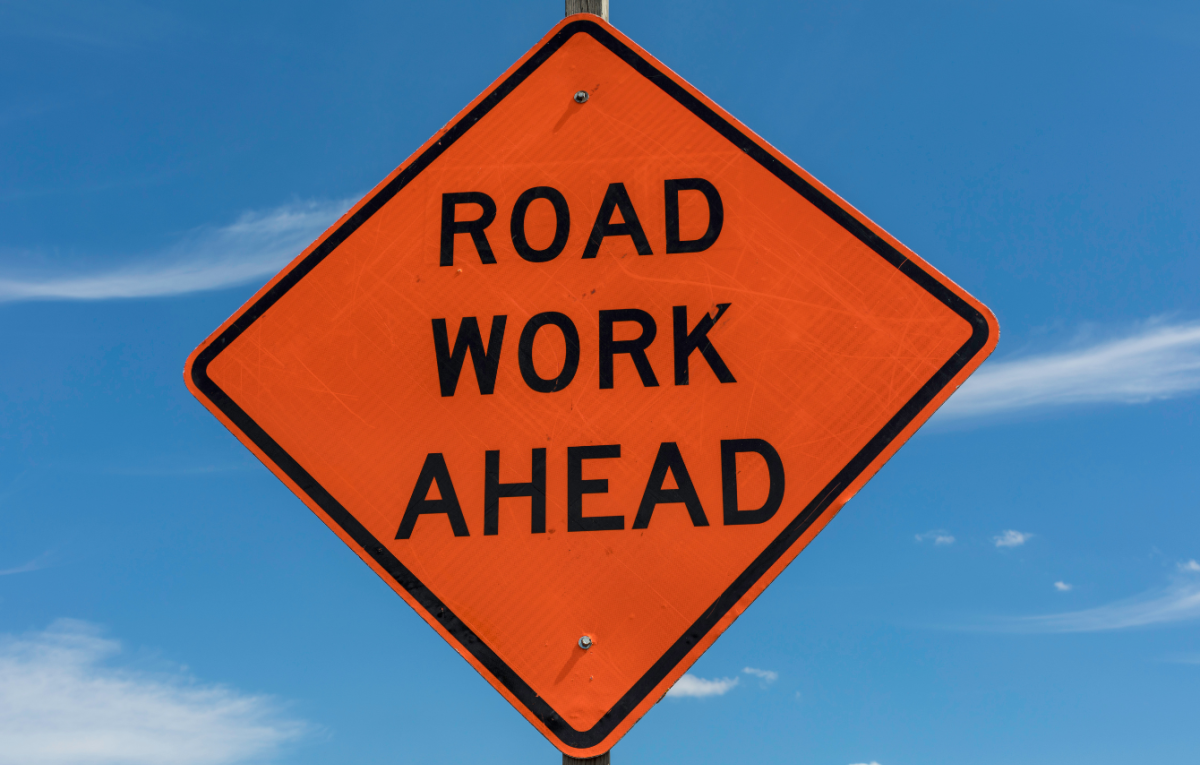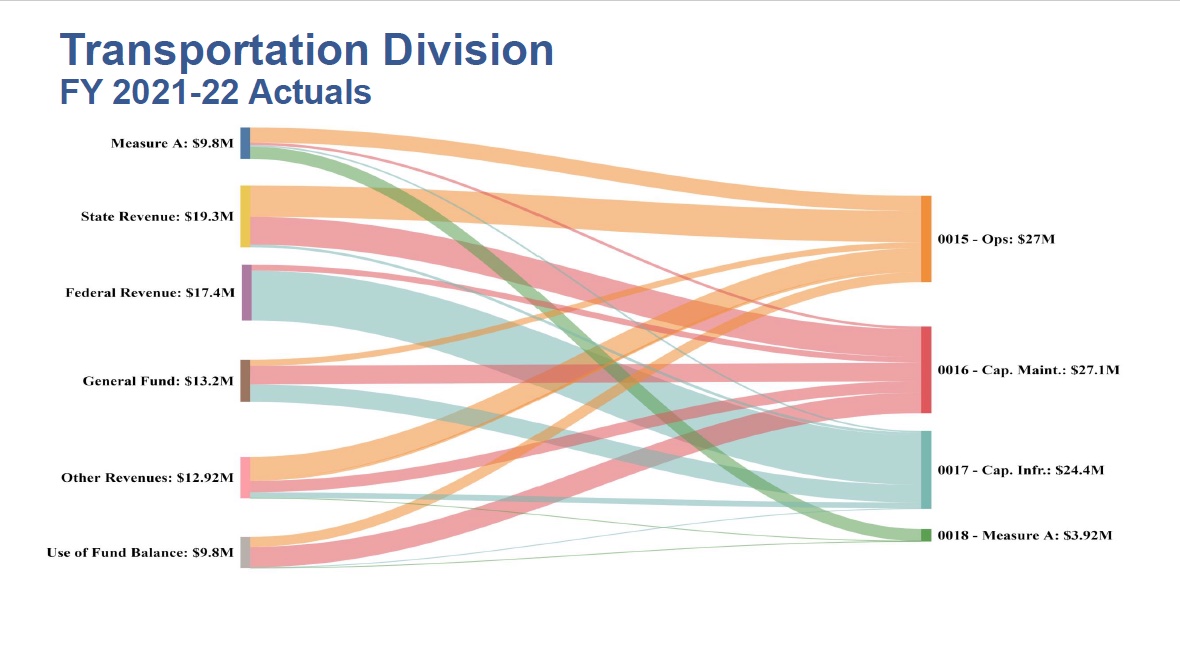Road Work Ahead for Santa Barbara County
Public Works Looks for More Money

As the colorfully wavy-gravy graph below shows, Santa Barbara County’s roads, bridges, and bike lanes are built, maintained, replaced through a number of revenue streams (left) and go variously into four pots of money (right) accessed by Public Works, which is looking to increase its funding for the coming fiscal year.

County Budget Director Paul Clementi made the presentation to the Board of Supervisors on Tuesday morning, asking for more from the Measure A fund — known at its inception as the “lane and train” measure — and that the county add $1 million more from its General Fund to cover increased liability insurance rates. Maintenance costs went up by $2.8 million between 2017 and 2022, Clementi explained, liability insurance more than doubled to $1.9 million between 2017 and 2023, and salary, benefits, and admin costs are anticipated to increase by $1.6 million this coming year. Clementi later told the Independent that the Measure A fund amount might increase by up to $2 million to a total of perhaps $8 million.
Clementi also stated that in the April budget talks, he would be proposing increasing permit revenue, perhaps in the road encroachment fees charged to utilities and others that use the county’s right-of-way, to cover a $450,000 shortfall in the cost of services. Supervisor Bob Nelson stated he agreed with the recommendations but had some reservations: “As we begin looking at broadband in our future … it’s a potential revenue source from entities using our county right of ways.” The fee was to maintain the right of way, which the entities used to make a lot of money, but he said it would cause him heartburn to see small mom ‘n’ pops burdened with the increase when bigger operators could better absorb such costs.
Public Work’s requests were approved unanimously by the board, but not before attorney Marc Chytilo commented on Measure A on behalf of the Committees for Land, Air, Water, and Species. He noted several things, including that the maintenance and expansion of bicycle paths were important, especially with the increased range of electric bicycles helping to cut greenhouse-gas emissions, and the growing concern with toxins produced by automobile brakes and tires.
“We’re still waiting for the train to join the lane,” Chytilo commented. “The expanded 101 is not going to provide the capacity that our community needs. The modeling shows that there will be future traffic congestion even with the additional lane,” he added, asking for board leadership in alternative transportation. He also observed that the 10 percent from Measure A intended for alternative transportation was a floor, not a ceiling.
Voters approved Measure A in 2008 as a 30-year half-cent transportation sales tax, which raised about $454 million so far, sending $25 million toward widening Highway 101 and $4.5 million toward commuter rail, with the remainder going toward numerous bridge, circulation, school, and transit programs.




You must be logged in to post a comment.